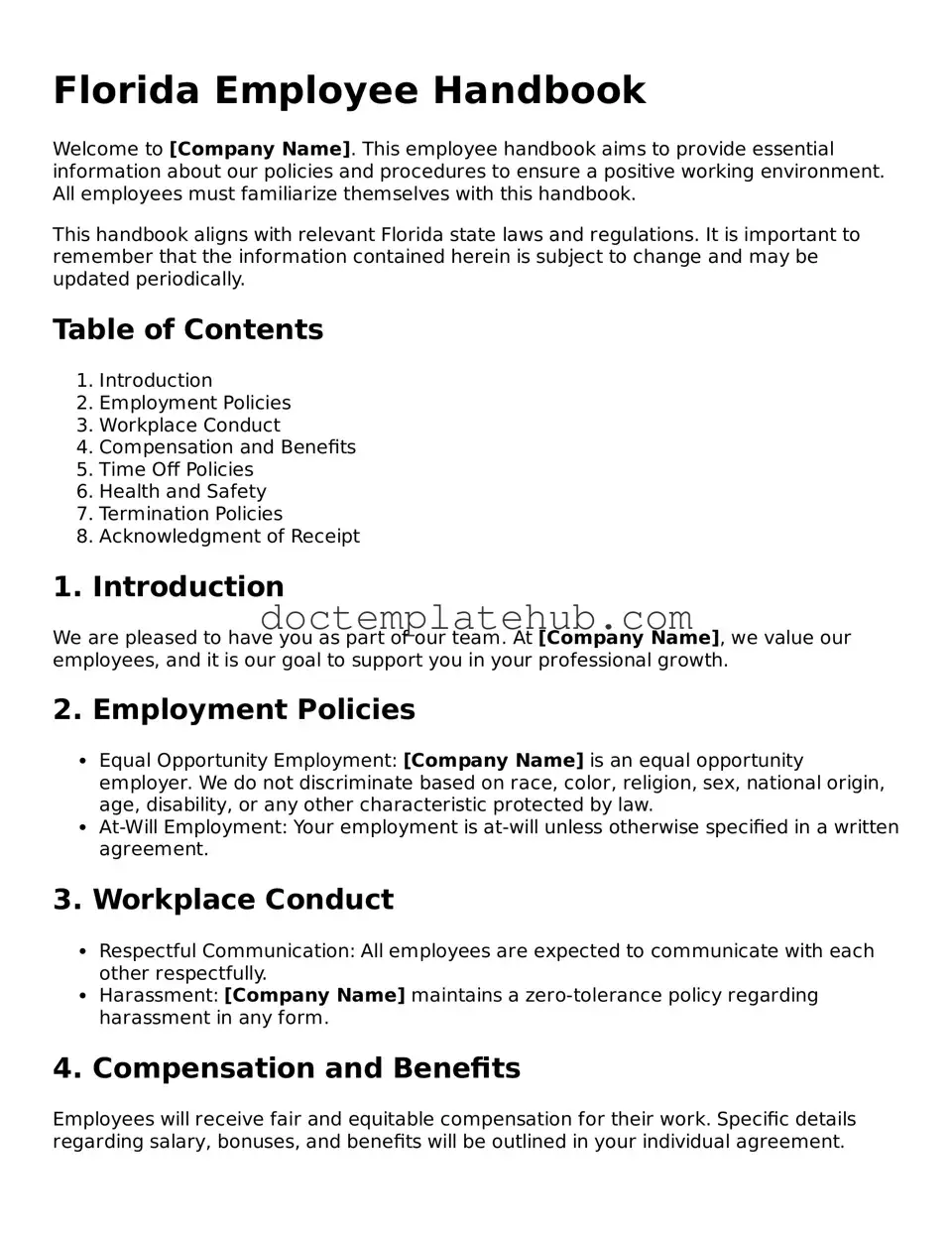What is the Florida Employee Handbook form?
The Florida Employee Handbook form is a document that outlines the policies, procedures, and expectations for employees within a Florida-based organization. It serves as a guide for both employers and employees, helping to ensure everyone understands their rights and responsibilities in the workplace.
Why is an Employee Handbook important?
An Employee Handbook is crucial for setting clear standards in the workplace. It helps to prevent misunderstandings and provides a reference for employees regarding company policies. This document can also protect employers by demonstrating that they have communicated important policies to their employees.
What should be included in the Employee Handbook?
The Employee Handbook should include sections on company policies, employee rights, workplace conduct, benefits, leave policies, and procedures for reporting issues. It may also cover topics such as harassment, discrimination, and disciplinary actions. Each section should be clear and easy to understand.
How often should the Employee Handbook be updated?
It is recommended to review and update the Employee Handbook at least once a year. Changes in laws, company policies, or organizational structure may require updates more frequently. Regular reviews ensure that the handbook remains relevant and compliant with current regulations.
Do all employees need to receive a copy of the Employee Handbook?
Yes, all employees should receive a copy of the Employee Handbook. Providing a handbook ensures that everyone has access to the same information. Employers should also obtain written acknowledgment from employees confirming they have received and understood the handbook.
Can an Employee Handbook be used in legal disputes?
Yes, an Employee Handbook can be used in legal disputes. If a dispute arises, the handbook may serve as evidence of the company’s policies and procedures. It is important that the handbook is clear and accurately reflects the company's practices to be effective in legal situations.
Is it necessary to have a lawyer review the Employee Handbook?
While it is not mandatory, having a lawyer review the Employee Handbook is highly advisable. Legal professionals can ensure that the handbook complies with state and federal laws, reducing the risk of potential legal issues down the line.
What should I do if I have questions about the Employee Handbook?
If you have questions about the Employee Handbook, you should reach out to your HR department or supervisor. They can provide clarification on any policies or procedures you do not understand. It is important to address any uncertainties to ensure compliance and understanding.
